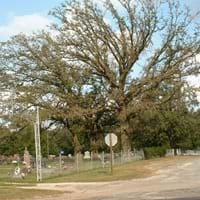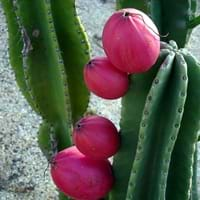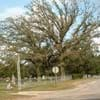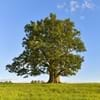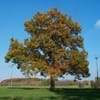Life Span
Perennial
Annual
Origin
North America, United States, Northeastern United States, Mid-Atlantic United States, Southeastern United States, North-Central United States, Central United States, South-Central United States, Texas, Canada
South America, Argentina, Brazil
Types
Not Available
Not Available
Habitat
Woodland Garden Canopy
Desert
USDA Hardiness Zone
3-8
11-15
Sunset Zone
A2, A3, 1a, 1b, 2a, 2b, 3a, 3b, 4, 5, 6, 7, 8, 9, 10, 11, 14, 15, 16, 17, 18, 19, 20, 21, 22, 23
16, 17, 21, 22, 23, 24
Habit
Oval or Rounded
Upright/Erect
Flower Color
Red, Light Green, Chartreuse
White, Yellow
Flower Color Modifier
Bicolor
Bicolor
Fruit Color
Brown, Chocolate
Pink, Red
Leaf Color in Spring
Green, Light Green, Dark Green
Green
Leaf Color in Summer
Dark Green
Green
Leaf Color in Fall
Dark Green, Gold, Brown
Green
Leaf Color in Winter
Not Available
Green
Plant Season
Spring, Summer, Fall, Winter
Spring, Summer, Fall, Winter
Sunlight
Full Sun
Full Sun
Type of Soil
Clay, Loam, Sand
Loam, Sand
The pH of Soil
Neutral, Alkaline
Acidic, Neutral, Alkaline
Soil Drainage
Well drained
Well drained
Bloom Time
Spring, Late Spring
Early Summer, Summer, Late Summer
Tolerances
Soil Compaction
Drought, Salt
Where to Plant?
Ground
Container, Ground
How to Plant?
Seedlings, Transplanting
Seedlings
Plant Maintenance
Medium
Medium
Watering Requirements
Average Water Needs, Keep the ground moist but not water-logged, Needs a lot of water initially, occasional watering once established, Water Deeply
Never Over-water
In Summer
Lots of watering
Lots of watering
In Spring
Moderate
Moderate
In Winter
Average Water
Average Water
Soil pH
Neutral, Alkaline
Acidic, Neutral, Alkaline
Soil Type
Clay, Loam, Sand
Loam, Sand
Soil Drainage Capacity
Well drained
Well drained
Sun Exposure
Full Sun
Full Sun
Pruning
Remove branches, Remove damaged fruit, Remove damaged leaves, Remove dead branches, Remove dead leaves, Remove dead or diseased plant parts, Remove deadheads
Remove damaged leaves, Remove dead branches, Remove dead leaves
Fertilizers
All-Purpose Liquid Fertilizer, High amounts of nutrients, organic fertlizers
All-Purpose Liquid Fertilizer
Pests and Diseases
Red blotch
Red blotch
Plant Tolerance
Drought
Drought
Flowers
Insignificant
Showy
Flower Petal Number
Not Available
Double
Foliage Texture
Coarse
Bold
Foliage Sheen
Glossy
Matte
Attracts
Birds
Birds, Hummingbirds, Butterflies
Allergy
Hay fever, Itchy eyes, Runny nose, sneezing, Watery eyes, Whooping Cough
Not Available
Aesthetic Uses
Not Used For Aesthetic Purpose
Showy Purposes
Beauty Benefits
Not Available
Not Available
Environmental Uses
Air purification, Nesting sites for birds, Shadow Tree, Shelter for wildlife, Wildlife
Air purification
Medicinal Uses
Astringent, Cramps, Tonic
Antioxidants, Indigestion, Oedema, Wounds
Part of Plant Used
Inner Bark, Leaves, Seeds
Fruits
Other Uses
Tannin, Used as a dye, Used as fuel, Used as insect repellent, Used for woodware
Showy Purposes
Used As Indoor Plant
No
Yes
Used As Outdoor Plant
Yes
Yes
Garden Design
Feature Plant, Shade Trees
Container, Fruit, Fruit Tree, Hedges, Houseplant, Rock Garden, Wall, Tropical
Botanical Name
QUERCUS macrocarpa
CEREUS hildmannianus ssp. uruguayanus
Common Name
Burr Oak, Mossycup Oak
Peruvian Apple Cactus
In Hindi
Burr Oak
Peruvian Apple cactus
In German
Burr Oak
Peruanische Apple-Kaktus
In French
Burr Oak
Péruvienne d'Apple Cactus
In Spanish
Burr Oak
Peruana de Apple Cactus
In Greek
Burr Oak
Του Περού μήλο κάκτος
In Portuguese
Burr Oak
Cactus a Apple peruana
In Polish
Burr Oak
Peruwiański Jabłko Cactus
In Latin
Burr Oak
Apple Peruviani Cactus
Phylum
Magnoliophyta
Magnoliophyta
Class
Magnoliopsida
Magnoliopsida
Order
Fagales
Caryophyllidae
Family
Fagaceae
Cactaceae
Clade
Angiosperms, Eudicots, Rosids
Angiosperms, Core eudicots, Eudicots
Subfamily
Not Available
Cactoideae
Number of Species
Not Available
Not Available
Importance of Burr Oak and Peruvian Apple Cactus
Want to have the most appropriate plant for your garden? You might want to know the importance of Burr Oak and Peruvian Apple Cactus. Basically, these two plants vary in many aspects. Compare Burr Oak and Peruvian Apple Cactus as they differ in many characteristics such as their life, care, benefits, facts, etc. Every gardener must at least have the slightest clue about the plants he wants to plant in his garden. Compare their benefits, which differ in many ways like facts and uses. The medicinal use of Burr Oak is Astringent, Cramps and Tonic whereas of Peruvian Apple Cactus is Antioxidants, Indigestion, Oedema and Wounds. Burr Oak has beauty benefits as follows: Not Available while Peruvian Apple Cactus has beauty benefits as follows: Not Available.
Compare Facts of Burr Oak vs Peruvian Apple Cactus
How to choose the best garden plant for your garden depending upon its facts? Here garden plant comparison will help you to solve this query. Compare the facts of Burr Oak vs Peruvian Apple Cactus and know which one to choose. As garden plants have benefits and other uses, allergy is also a major drawback of plants for some people. Allergic reactions of Burr Oak are Hay fever, Itchy eyes, Runny nose, sneezing, Watery eyes and Whooping Cough whereas of Peruvian Apple Cactus have Not Available respectively. Having a fruit bearing plant in your garden can be a plus point of your garden. Burr Oak has showy fruits and Peruvian Apple Cactus has showy fruits. Also Burr Oak is not flowering and Peruvian Apple Cactus is not flowering . You can compare Burr Oak and Peruvian Apple Cactus facts and facts of other plants too.
